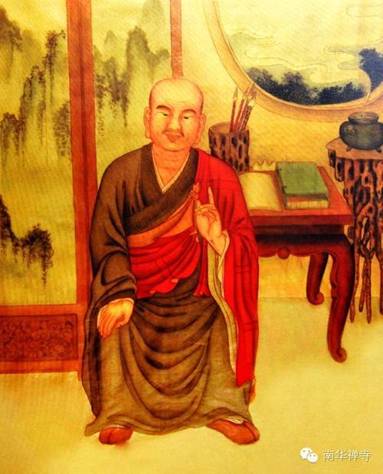ZEN MESTEREK ZEN MASTERS
« Zen főoldal
« vissza a Terebess Online nyitólapjára

長靈守卓 Changling Shouzhuo (1060-1130)
(Rōmaji:) Chōrei Shutaku
Changling Shouzhuo (1065-1123)
“Imitations of Hanshan Poetry”
in: A Study on Imitating Activities of Hanshan Poems by Chan Buddhist Monks in SONG Dynasty
by HUANG Jing-Jia
Journal of Literature and Art Studies, April 2013, Vol. 3, No. 4, p. 209.
In the late Northern SONG Dynasty, Changling Shouzhuo wrote four “Imitations of Hanshan Poetry”, which primarily interpreted Chan thought. Shouzhuo practiced at Linji Sect Yellow Dragon School Lingyuan Weiqing (?-1117), where he revitalized Linji Sect, and since his countenance was serious and cold, people called him “Iron Face”.
Seeing the way is practicing the way, 见道即修道,
Without mind, who can find enlightenment. 无心 谁悟心。
True, false, common, sacred, 是非凡与圣,
No difference between past and present in the rise and fall. 成坏古无今。
Withered leaves flow in the green brook, 碧 涧流残叶,
Breeze blows into a quiet forest. 微 风入静林。
Who comes below the rocks, 谁来石嵓下,
To teach you to thread a needle at night. 教汝夜穿 针。Records of Chan Buddhism Master Changling Shouzhuo (长灵守卓禅师语录). (n.d.). Xin Zuan Wan Xu Cang Jing, 69, 270a.
The first couplet was from the words of Mazu Daoyi: “It is not necessary to cultivate the way, as long there is no pollution” (Broad Records of Chan Master Ma Zu Dao Yi, n.d., p. 3a). What is pollution? Any mind paid to life, death, or pretense is all pollution. Being without mind is to practice the way, which means one should maintain a mind without excess. What is a mind without excess? Being without a discerning mind for pretense, true/false, take/give, irregular/regular, or common/sacred is to be without mind. Folklore stated that on the seventh day of the seventh month on the lunar calendar, women who thread needles under the moonlight could beg for and achieve dexterous hands. This refers to the understanding of enlightenment by meditating in the forest on quiet nights.
DOC: Huanglong pai
The lineage of the Huanglong branch of the Linji school